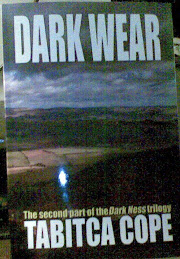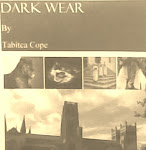
The Yeren, or Chinese Wildman, is a man-like creature , like bigfoot, that is alleged to live in the mountainous regions of southern and central China. Part of Chinese folklore, the Yeren are mentioned in Chinese literature that dates back more than 2,000 years
The creature is described as between five to seven feet tall with a body covered with red to dark brown fur. The face resembles a cross between an ape’s and a human’s. The yeren is said to leave a large footprints, about 16 inches long, showing a five toe print like humans, but with a structure more like that of apes. Sound familiar? Could be bigfoot being described.
There has been history of sightings by scientists and locals for example the biologist Wang Tselin claimed to have examined the body of a Wildman that had been killed in the Gansu region in the 1940’s. He said it was a female specimen around six feet tall, with striking features that appeared to be a cross between ape and human. Then geologist Fan Jingquan reported seeing Wildmen in 1950 ,live and in the flesh, a pair that he thought could be a mother and son, in the forests of the Shanxi province.
In 1961, a team of road builders said they had killed a female Yeren in the forests of Xishuang Banna. By the time officials arrived to investigate , the body had disappeared. Twenty years after, a journalist who had been involved in the investigation came forward to claim that the creature killed was an "unknown animal of human shape." A bit late one might think to come forward. Why so long?
In May 1976 Six young soldiers from the Shennongiia forestry region were driving along the highway near Chunshuy, a village between Fangxian county and Shennongjia, when they were startled to come across a strange tailless creature covered in reddish fur, illuminated by the headlamps of their car. This report created a great deal of public interest, and people started writing in to report other sightings ,prompting groups of scientists and the army tomounting expeditions into the forest. An expedition of more than 100 members including scientists, photographers and special infiltration teams of soldiers with rifles, tranquillizer dart guns, tape recorders and hunting dogs, searched the area during 1976 and 1977, and hundreds of people where interviewed. They found no definite evidence. The expedition party moved near to what was thought to be one of the creatures, before the beast could be captured a rather nervous soldier accidentally shot himself in the leg, this brought people running and must have frightened any animal away.
The closest thing to proof of the Yeren's existence surfaced in 1980 in the form of the preserved hands and feet of an unknown hominid creature.Villagers had killed a Wildman in the Zhejiang province in 1957, and a biology teacher had removed and preserved all four of its extremities. Upon examining the hands and feet, researcher Zhou Guoxing at first announced that they belonged to an unknown species but later declared they had come from a large macaque monkey.
Another lot of expeditions set off between 1980 and 1985 near Songbai in Shennongjia forest. More than two hundred footprints were collected on Mount Quiangdao .The footprints found on the first occasion were 48 cm in length, with an average stride of 2.5 m. No actual wild men were photographed but eye witness reports were collected.
Reports still appear regularly in the newspapers:
From : (China.org.cn by Chen Xia, November 20, 2007)
Two giant ape-like creatures were spotted in the afternoon of November 18, 2007, in Shennongjia, an area famous for the legendary “Bigfoot” Wild Man [or Yeren] located in central China’s Hubei Province. Four independently traveling tourists claimed that they were almost face to face with two Wild Men while touring around the Licha River, at the northern foot of Laojun Mountain. If their words prove to be true, the tourists will be the first eyewitnesses of “Bigfoot” in southeast Shennongjia Nature Reserve in recent years.
According to a Changjiang Times report on November 20, Zhang Jinxing, a scientist conducting investigations in the Shennongjia Nature Reserve, reported the thrilling event to relevant local authorities in the afternoon of November 19. When Zhang had finished his investigation that morning, he came across four independently traveling tourists, two men and two women, in a Land-Rover. These tourists told him that they had seen two Wild Men [Yeren] around the Licha River in the morning of November 18. They were near a sharp curve on the mountain road when three of the four, two men and one woman, spotted two giant, dark figures standing behind a tangled mass of shrubbery some 50 meters away from their car. It seemed that the two creatures didn’t see the car at first, but they soon fled into the dense forest. Later that day, the tourists reported the event to the Lichahe Forest Maintenance Station and came back to the spot with two forest rangers. At this time, they only found a few footprints, branches they believed were broken by the wild men and wild fruits scattered on the ground.
Since the Lichahe Forest Maintenance Station is situated in a remote area in the Shennongjia Nature Reserve, local authorities didn’t receive the report in a timely fashion. Currently, the proper authorities are busy contacting the four eyewitnesses and an investigation team has been sent out along the Licha River to conduct a thorough investigation. Local authorities have promised to announce investigation results as soon as possible.
|
| And people continue to research the Yeren. See this article from The Los Angeles Times Article ; April 19, 2000 BEIJING -- Yuan Zhenxin keeps up his search for Bigfoot. Yuan is convinced that between 1,000 and 2,000 of the apelike creatures roam the forests of central China, particularly the Shennongjia Nature Reserve in Hubei province. |
|
|
|
| |||
|
|
"They're very clever," said Yuan, a retired paleoanthropologist and member of the prestigious Chinese Academy of Sciences. Yuan describes Bigfoot as more than 6 1/2 feet tall, with reddish brown hair, long limbs and a rather nasty case of body odor.
In 1976-77, the government sponsored a Bigfoot expedition to Shennongjia consisting of 100 people, including army personnel.
That trip and others yielded numerous samples of what Yuan maintains are the hair, footprints and faeces of an undiscovered species, possibly descended from a giant ape whose fossilized teeth can still be found in the region.
"They're a cousin of humans," he said of Bigfoot, known in Chinese as "wild man."
But money for such study has dwindled, because fewer and fewer of Yuan's fellow scientists are willing to approve funding without more conclusive proof.
Yuan and his supporters have been forced to dig into their own pockets to keep three informal research centers operating. One of Yuan's colleagues even divorced his wife, sold his home and moved permanently to Shennongjia to carry on the work.
There are reports from around the world of various types of bigfoot or wildmen . I find it interesting that they so similar. Could a species of unknown ape or a branch of human and ape hybrid still exist in wild places? Only concrete evidence will ever answer that question. Sadly there is no sign of that at the moment and little money to fund the research.





















No comments:
Post a Comment